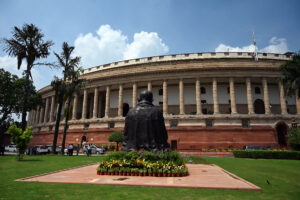tech2 News StaffAug 13, 2021 20:25:56 IST
The new IPCC report is “a code red for humanity”, says UN Secretary-General António Guterres.
Established in 1988 by United Nations Environment Programme (UNEP) and the World Meteorological Organisation (WMO), the Intergovernmental Panel on Climate Change (IPCC) assesses climate change science. Its new report is a warning sign for policy makers all over the world.

In this picture taken on 26 October, 2014, Peia Kararaua, 16, swims in the flooded area of Aberao village in Kiribati. Kiribati is one of the countries worst hit by the sea level rise since high tides mean many villages are inundated, making them uninhabitable. Image credit: UNICEF/Sokhin
This was the first time the approval meeting for the report was conducted online. There were 234 authors from the world over who clocked in 186 hours working together to get this report released.
For the first time, the report offers an interactive atlas for people to see what has already happened and what may happen in the future to where they live.
“This report tells us that recent changes in the climate are widespread, rapid and intensifying, unprecedented in thousands of years,” said IPCC Vice-Chair Ko Barrett.
UNEP Executive Director Inger Andersen that scientists have been issuing these messages for more than three decades, but the world hasn’t listened.
Here are the most important takeaways from the report:
Humans are to be blamed
Human activity is the cause of climate change and this is an unequivocal fact. All the warming caused in the pre-industrial times had been generated by the burning of fossil fuels such as coal, oil, wood, and natural gas.
Global temperatures have already risen by 1.1 degrees Celsius since the 19th century. They have reached their highest in over 100,000 years, and only a fraction of that increase has come from natural forces.
Michael Mann told the Independent the effects of climate change will be felt in all corners of the world and will worsen, especially since “the IPCC has connected the dots on climate change and the increase in severe extreme weather events… considerably more directly than previous assessments.”
We will overshoot the 1.5 C mark
According to the report’s highly optimistic-to-reckless scenarios, even if we do everything right and start reducing emissions now, we will still overshoot the 1.5C mark by 2030. But, we will see a drop in temperatures to around 1.4 C.
Control emissions, Earth will do the rest
According to the report, if we start working to bring our emissions under control, we will be able to decrease warming, even if we overshoot the 1.5C limit.
The changes we are living through are unprecedented; however, they are reversible to a certain extent. And it will take a lot of time for nature to heal. We can do this by reducing our greenhouse gas (GHG) emissions. While we might see some benefits quickly, “it could take 20-30 years to see global temperatures stabilise” says the IPCC.
Also read: Leaders and experts speak up after the release of the new IPCC report
Sea level rise
Global oceans have risen about 20 centimetres (eight inches) since 1900, and the rate of increase has nearly tripled in the last decade. Crumbling and melting ice sheets atop Antarctica (especially in Greenland) have replaced glacier melt as the main drivers.
If global warming is capped at 2 C, the ocean watermark will go up about half a metre over the 21st century. It will continue rising to nearly two metres by 2300 — twice the amount predicted by the IPCC in 2019.
Because of uncertainty over ice sheets, scientists cannot rule out a total rise of two metres by 2100 in a worst-case emissions scenario.
CO2 is at all-time high
CO2 levels were greater in 2019 than they had been in “at least two million years.” Methane and nitrous oxide levels, the second and third major contributors of warming respectively, were higher in 2019 than at any point in “at least 800,000 years,” reported the Independent.
Control methane
The report includes more data than ever before on methane (CH4), the second most important greenhouse gas after CO2, and warns that failure to curb emissions could undermine Paris Agreement goals.
Human-induced sources are roughly divided between leaks from natural gas production, coal mining and landfills on one side, and livestock and manure handling on the other.
CH4 lingers in the atmosphere only a fraction as long as CO2, but is far more efficient at trapping heat. CH4 levels are their highest in at least 800,000 years.
Natural allies are weakened
Since about 1960, forests, soil and oceans have absorbed 56 percent of all the CO2 humanity has released into the atmosphere — even as those emissions have increased by half. Without nature’s help, Earth would already be a much hotter and less hospitable place.
But these allies in our fight against global heating — known in this role as carbon sinks — are showing signs of saturatation, and the percentage of human-induced carbon they soak up is likely to decline as the century unfolds.
Suck it out
The report suggests that warming could be brought back down via “negative emissions.” We could cool down the planet by sucking out or sequestering the carbon from the atmosphere. While this is a viable suggestion that has been thrown around and there have been small-scale studies that have tried to do this, the technology is not yet perfect. The panel said that could be done starting about halfway through this century but doesn’t explain how, and many scientists are skeptical about its feasibility.
Cities will bear the brunt
Experts warn that the impact of some elements of climate change, like heat, floods and sea-level rise in coastal areas, may be exacerbated in cities. Furthermore, IPCC experts warn that low-probability scenarios, like an ice sheet collapse or rapid changes in ocean circulation, cannot be ruled out.
With inputs from agencies










